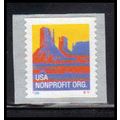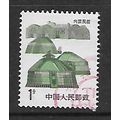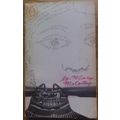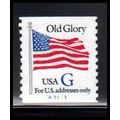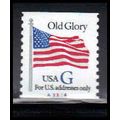Chard, Somerset - Fore Street looming East - local postcard c.1980s
- Condition : Used
- Dispatch : 2 Days
- Brand : None
- ID# : 220636381
- Quantity : 1 item
- Views : 165
- Location : United Kingdom

- Seller : justthebook (+1703)
- Barcode : None
- Start : Fri 26 Jan 2024 14:18:12 (BST)
- Close : Run Until Sold
- Remain : Run Until Sold
More Listings from This Seller view all
Seller's Description
- Postcard
- Picture / Image: Fore Street, Chard, [Somerset] looking East
- Publisher: The Matthews Wright Press, Chard
- Postally used: no
- Stamp: n/a
- Postmark(s): n/a
- Sent to: n/a
- Notes / condition:
Please ask if you need any other information and I will do the best I can to answer.
Image may be low res for illustrative purposes - if you need a higher definition image then please contact me and I may be able to send one. No cards have been trimmed (unless stated).
------------------------------------------------
Postage & Packing:
Postage and packing charge should be showing for your location (contact if not sure).
No additional charges for more than one postcard. You can buy as many postcards from me as you like and you will just pay the fee above once. Please wait for combined invoice. (If buying postcards with other things such as books, please contact or wait for invoice before paying).
Payment Methods:
UK - PayPal, Cheque (from UK bank) or postal order
Outside UK: PayPal ONLY (unless otherwise stated) please. NO non-UK currency checks or money orders (sorry).
NOTE: All postcards are sent in brand new stiffened envelopes which I have bought for the task. These are specially made to protect postcards and you may be able to re-use them. In addition there are other costs to sending so the above charge is not just for the stamp!
I will give a full refund if you are not fully satisfied with the postcard.
----------------------------------------------
Text from the free encyclopedia WIKIPEDIA may appear below to give a little background information (internal links may not work) :
*************
Chard is a town and civil parish in the English county of Somerset. It lies on the A30 road near the Devon border, 15 miles (24 km) south west of Yeovil. The parish has a population of approximately 14,000 and, at an elevation of 121 metres (397 ft), it is the southernmost and highest town in Somerset. Administratively Chard forms part of the district of South Somerset.
The name of the town was Cerden in 1065 and Cerdre in the Domesday Book of 1086. Before the Norman Conquest, Chard was held by the Bishop of Wells. The town's first charter was from King John in 1234. Most of the town was destroyed by fire in 1577, and it was further damaged during the English Civil War. A 1663 will by Richard Harvey of Exeter established Almshouses known as Harvey's Hospital. In 1685 Chard was one of the towns in which Judge Jeffreys held some of the Bloody Assizes after the failure of the Monmouth Rebellion. textile manufacture was important in the Middle Ages. Chard claims to be the birthplace of powered flight as in 1848 John Stringfellow first demonstrated that engine-powered flight was possible.[2][3] and the development of articulated artificial limbs. Chard is a key point on the Taunton Stop Line, a World War II defensive line. The Chard Canal was a tub boat canal built between 1835 and 1842. Chard Branch Line was created in 1860 to connect the two London and South Western Railway and Bristol and Exeter Railway main lines and ran through Chard until 1965.
Local folklore claims that the town has a very unusual and unique feature, a stream running along either side of Fore Street, one stream eventually flows into the Bristol Channel and the other eventually reaches the English Channel. Chard Reservoir, approximately a mile north east of the town, is a Local Nature Reserve, and Snowdon Hill Quarry a geological Site of Special Scientific Interest. Major employers in the town include Numatic International Limited and the Oscar Mayer food processing plant.There are a range of sporting and cultural facilities, with secondary education being provided at Holyrood Academy and religious sites including the Church of St Mary the Virgin which dates from the late 11th century.
Chard's name was Cerden in 1065 and Cerdre in the Domesday Book of 1086 and it means ""house on the chart or rough ground"" (Old English: ceart + renn).[4] Before the Norman Conquest Chard was held by the Bishop of Wells.[5] The town's first charter was from King John and another from the bishop in 1234, which delimited the town and laid out burgage holdings in 1-acre (4,000 m2) lots at a rent of twelve pence per year.[6] The parish of Chard was part of the Kilmersdon Hundred,[7]
Most of the town was destroyed by fire in 1577.[5][8] After this time the town was largely rebuilt including Waterloo House and Manor Court House in Fore Street which were built as a house and courtroom, and have now been converted into shops and offices.[9] Further damage to the town took place during the English Civil War with both sides plundering its resources, particularly in 1644 when Charles I spent a week in the town.[5]
A 1663 will by Richard Harvey of Exeter established Almshouses which became Harvey's Hospital. These were rebuilt in 1870 largely of stone from previous building.[5][10] In 1685 Chard was one of the towns in which Judge Jeffreys held some of the Bloody Assizes after the failure of the Monmouth Rebellion in which 160 men from Chard joined the forces of the Duke of Monmouth. The subsequent hangings took place on Snowden Hill to the west of the town.[5] As elsewhere in this area, the 'finger-post' road-sign at this spot is painted red and is known as 'Red Post' to commemorate the executions.
There was a fulling mill in the town by 1394 for the textile industry.[5] After 1820 this expanded with the town becoming a centre for lace manufacture led by manufacturers who fled from the Luddite resistance they had faced in the English Midlands. Bowden's Old Lace Factory[11] and the Gifford Fox factory[12] are examples of the sites constructed. The Guildhall was built as a Corn Exchange and Guildhall in 1834 and is now the Town Hall.[13]
On Snowdon Hill is a small cottage which was originally a toll house built by the Chard Turnpike trust in the 1830s,[14] to collect fees from those using a road up the hill which avoided the steep gradient.[15]
Chard claims to be the birthplace of powered flight, as it was here in 1848 that the Victorian aeronautical pioneer John Stringfellow (1799–1883) first demonstrated that engine-powered flight was possible through his work on the Aerial Steam Carriage.[2][3] James Gillingham (1839–1924) from Chard pioneered the development of articulated artificial limbs when he produced a prosthesis for a man who lost his arm in a cannon accident in 1863.[3] Chard Museum has a display of Gillingham's work.[16]
Chard was a key point on the Taunton Stop Line, a World War II defensive line consisting of pillboxes and anti-tank obstacles, which runs from Axminster north to the Somerset coast near Highbridge.[17] In 1938 a bomb proof bunker was built behind the branch of the Westminster Bank. During the war it was used to hold duplicate copies of the bank records in case its headquarters in London was destroyed. It was also used to store the emergency bank note supply of the Bank of England. There has also been speculation that the Crown Jewels were also stored there, however this has never been confirmed.[18]
Action Aid, the International Development Charity, had their headquarters in Chard when they started life in 1972 as Action in Distress. The Supporters Services department of the charity is still based in Chard.[19]
type=printed
city/ region=chard
period=post-war (1945-present)
postage condition=unposted
number of items=single
size=continental/ modern (150x100 mm)
Listing Information
| Listing Type | Gallery Listing |
| Listing ID# | 220636381 |
| Start Time | Fri 26 Jan 2024 14:18:12 (BST) |
| Close Time | Run Until Sold |
| Starting Bid | Fixed Price (no bidding) |
| Item Condition | Used |
| Bids | 0 |
| Views | 165 |
| Dispatch Time | 2 Days |
| Quantity | 1 |
| Location | United Kingdom |
| Auto Extend | No |



 for 1 item(s)
for 1 item(s)






